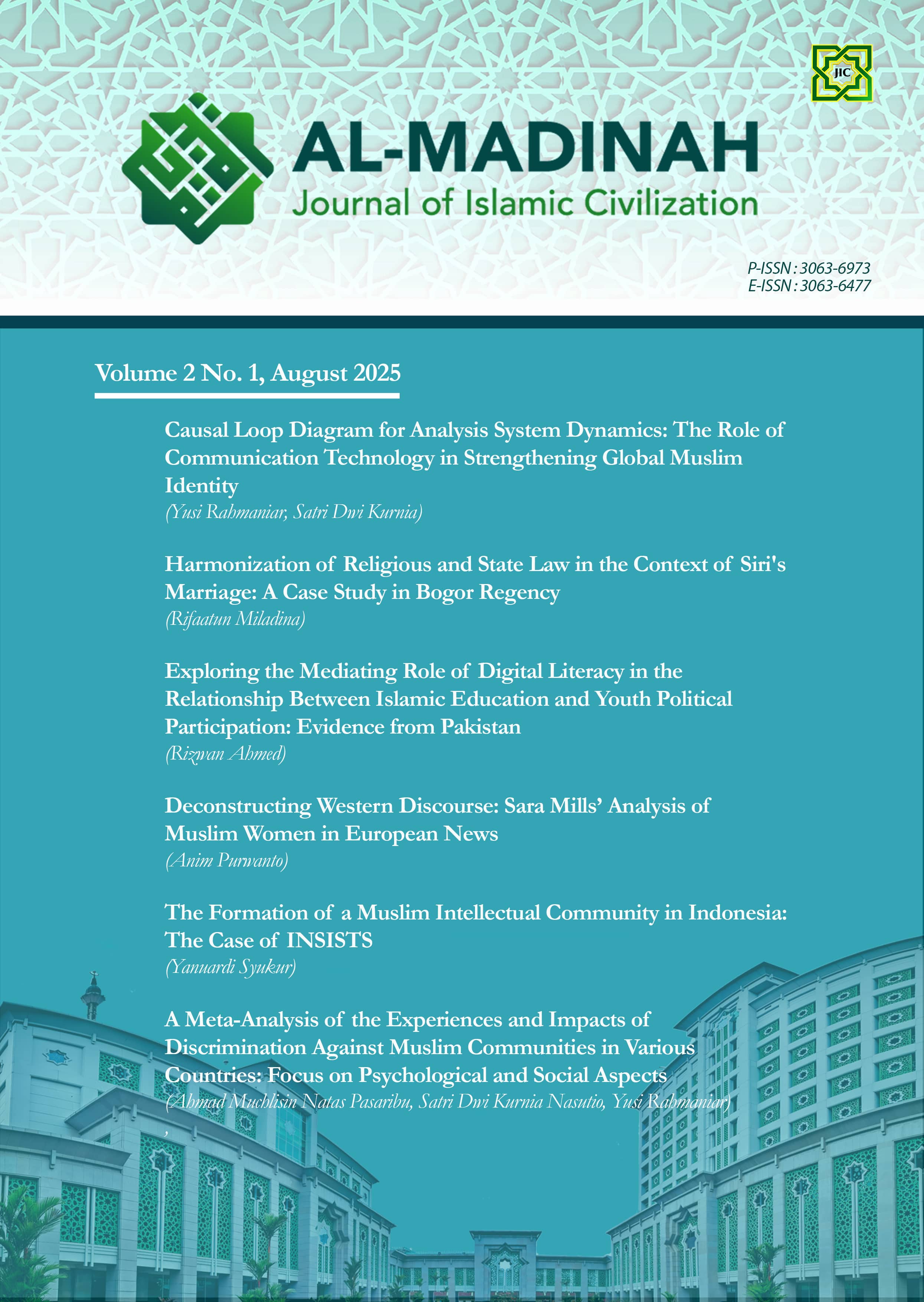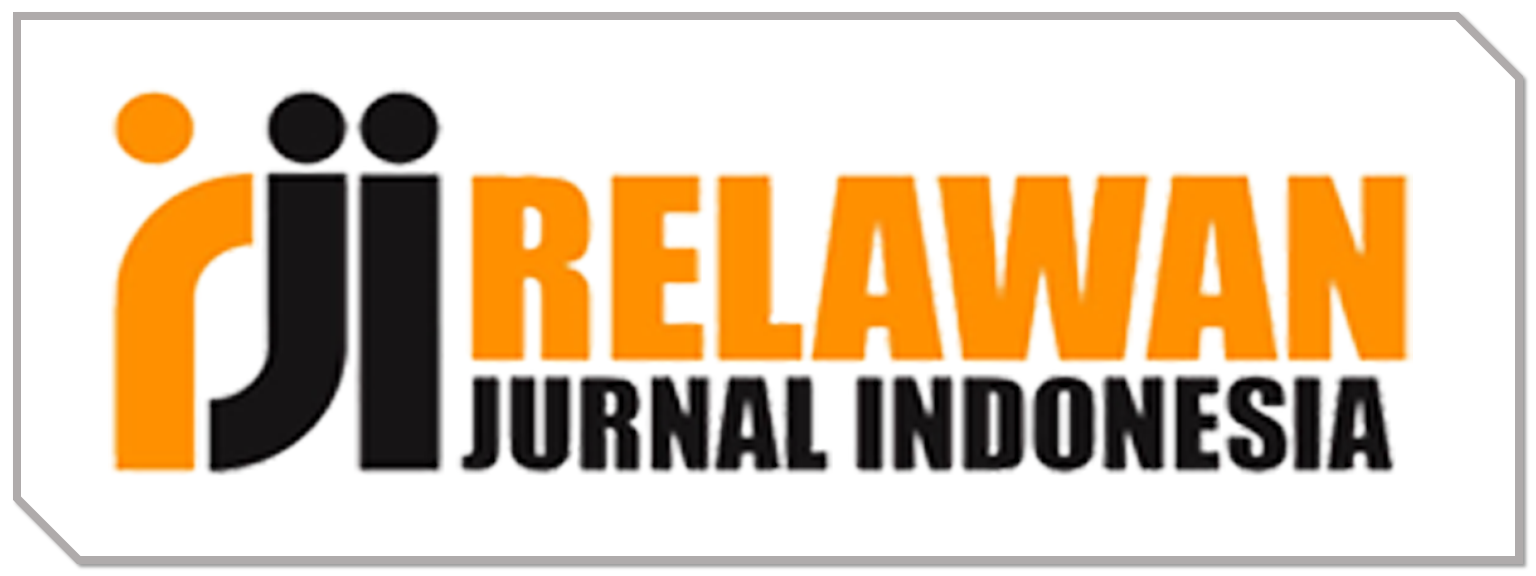Causal Loop Diagram for Analysis System Dynamics: The Role of Communication Technology in Strengthening Global Muslim Identity
DOI:
https://doi.org/10.70901/zg4x4s02Keywords:
Causal Loop Diagram, Dynamic System Analysis, Communication Technology, Global Muslim Identity, Online Communities, Religious NarrativesAbstract
This study investigates the complex ways in which communication technology influences the development and strengthening of a global Muslim identity. The research employs a system dynamics approach, utilizing the Causal Loop Diagram (CLD) methodology to construct a comprehensive visual model. This model systematically illustrates the interconnected variables and intricate feedback mechanisms that drive this contemporary phenomenon. The CLD reveals how the widespread proliferation of diverse digital platforms and social media channels enables the rapid and far-reaching dissemination of religious discourses. This process, in turn, fosters the organic emergence of robust online Muslim communities, creating a dynamic cycle. The model further elucidates how these online communities and their interactions contribute to a heightened sense of shared identity and collective consciousness, particularly when operating within broader socio-political contexts. Through a detailed analysis of these dynamic interdependencies, the study identifies critical leverage points for positive change and also highlights potential unforeseen outcomes associated with the powerful role of technology in shaping a unified global Muslim identity. The principal findings point to a powerful reinforcing feedback loop where increased online engagement leads directly to a more cohesive community, which subsequently drives even greater participation and a stronger sense of transnational belonging. The major conclusion is that communication technology acts as a fundamental catalyst for a new form of religious identity that transcends geographical borders. Ultimately, the study's contributions offer valuable and timely insights for both scholars and policymakers seeking to comprehend the evolving nature of religious identity in the digital era and its broader societal implications.
Downloads
References
Adeoye, M. A., & Noorhayati, S. M. (2024). Sacred Bytes: Assessing The Influence Of Social Networks And Virtual Space On Religious Beliefs. JOSSE: Journal Of Social Science And Economics, 3(1), 243–253. https://doi.org/10.37812/josse.v3i1.1738
Azra, Azyumardi. Indonesia, Islam, and Democracy: Dynamics in a Global Context. Equinox Publishing, 2006
Bliuc, A.-M., Betts, J. M., Vergani, M., Bouguettaya, A., & Cristea, M. (2024). A theoretical framework for polarization as the gradual fragmentation of a divided society. Communications Psychology, 2(1), 75. https://doi.org/10.1038/s44271-024-00125-1
Botelho, F. H. F. (2021). Accessibility to digital technology: Virtual barriers, real opportunities. Assistive Technology, 33(sup1), 27–34. https://doi.org/10.1080/10400435.2021.1945705
Castells, M. (2023). The Network Society Revisited. American Behavioral Scientist, 67(7), 940–946. https://doi.org/10.1177/00027642221092803
Dalimunthe, M. A., Pallathadka, H., Muda, I., Manoharmayum, D. D., Shah, A. H., Prodanova, N. A., Mamarajabov, M. E., & Singer, N. (2023). Challenges of Islamic education in the new era of information and communication technologies. HTS Teologiese Studies / Theological Studies, 79(1). https://doi.org/10.4102/hts.v79i1.8608
Diana, A., Azani, M. Z., & M, M. (2024). The Concept And Context Of Islamic Education Learning In The Digital Era: Relevance And Integrative Studies. Profetika: Jurnal Studi Islam, 25(01), 33–44. https://doi.org/10.23917/profetika.v25i01.4239
Forrester, J. W. (2007). System dynamics—The next fifty years. System Dynamics Review, 23(2–3), 359–370. https://doi.org/10.1002/sdr.381
Hoover, S., & Echchaibi, N. (2023). Media Theory and the Third Spaces of Digital Religion (1st Edition). Routledge.
Huda, M., Nor Muhamad, N. H., Isyanto, P., Muhamat, R., Marni, N., Ahmad Kilani, M., & Safar, J. (2020). Building harmony in diverse society: Insights from practical wisdom. International Journal of Ethics and Systems, 36(2), 149–165. https://doi.org/10.1108/IJOES-11-2017-0208
Khamis, S. (2021). “Cyber Ummah”: The Internet and Muslim Communities. In R. Lukens-Bull & M. Woodward (Eds.), Handbook of Contemporary Islam and Muslim Lives (pp. 823–843). Springer International Publishing. https://doi.org/10.1007/978-3-030-32626-5_69
Nurdin, N. (2022). Impact of Internet Development on Muslim Interaction with Islam. Proceeding of International Conference on Islamic and Interdisciplinary Studies(ICIIS), 1. https://jurnal.uindatokarama.ac.id/index.php/iciis/issue/archive
O’Donnell, K., Ewart, J., & Walding, S. (2021). Perceptions and realities: The main sources of information for non-Muslim Australians about the religion of Islam and Muslim people. Journalism, 22(4), 1031–1047. https://doi.org/10.1177/1464884918808658
Rahbari, L. (2021). In Her Shoes: Transnational Digital Solidarity With Muslim Women, or the Hijab? Tijdschrift Voor Economische En Sociale Geografie, 112(2), 107–120. https://doi.org/10.1111/tesg.12376
Sălcudean, M., Pintea, A., & Săvescu, R. (2023). Connecting Sustainable Development with Media, Journalism and Communication Programs in European Universities. Studies in Business and Economics, 18(2), 290–302. https://doi.org/10.2478/sbe-2023-0038
Yusuf, K. M. (2024). Konsep Tentang Masyarakat (Ummah, Sya’b dan Kabilah). INNOVATIVE: Journal Of Social Science Research, 4(6), 8529–8542. https://doi.org/10.31004/innovative.v4i6.17387
Zaid, B., Fedtke, J., Shin, D. D., El Kadoussi, A., & Ibahrine, M. (2022). Digital Islam and Muslim Millennials: How Social Media Influencers Reimagine Religious Authority and Islamic Practices. Religions, 13(4), 335. https://doi.org/10.3390/rel13040335
Zhang, L. (2025). The Digital Age of Religious Communication: The Shaping and Challenges of Religious Beliefs through Social Media. Studies on Religion and Philosophy, 1(1), 25–41. https://doi.org/10.71204/de63mn10
Downloads
Published
Issue
Section
License
Copyright (c) 2025 Yusi Rahmaniar, Satri Dwi Kurnia Nasution

This work is licensed under a Creative Commons Attribution-ShareAlike 4.0 International License.









